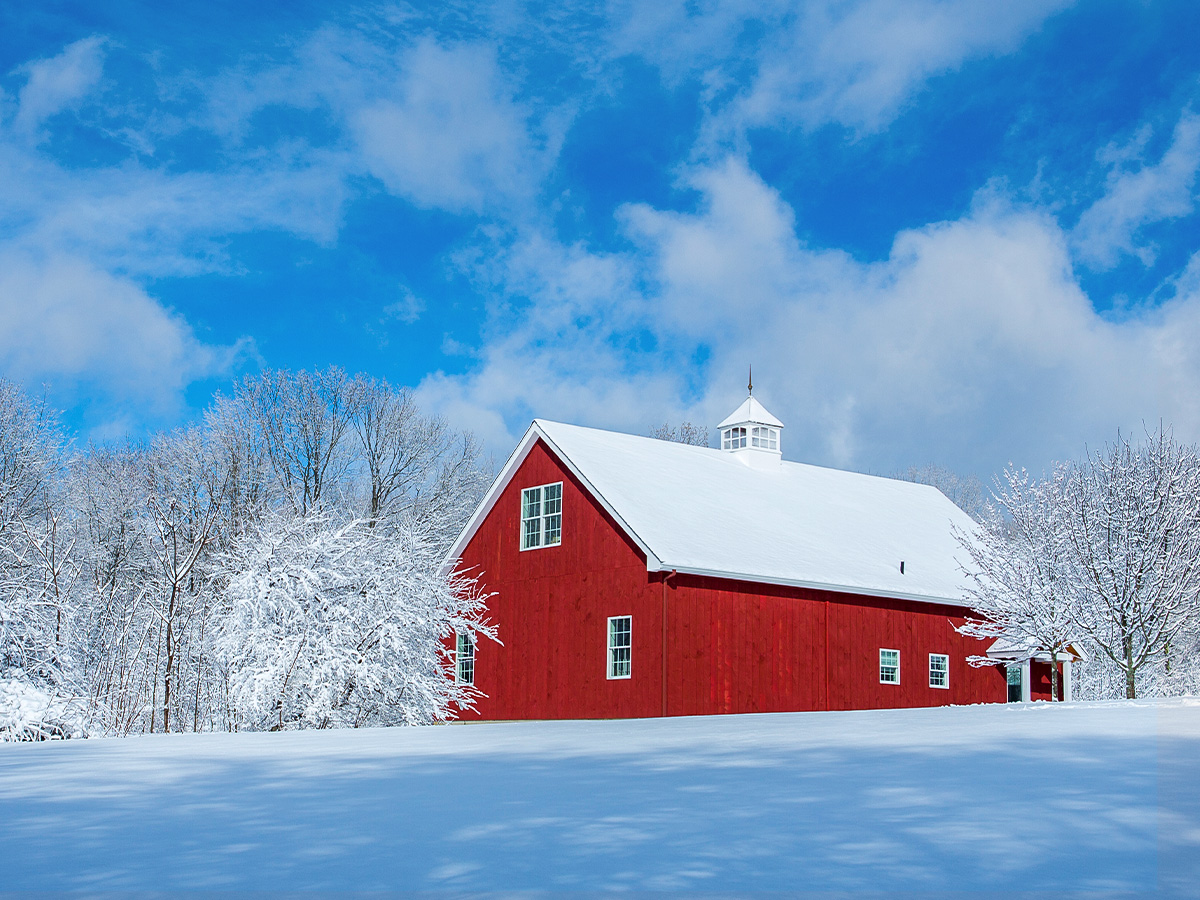Top Tips for Winter Readiness (on your property)
October 30, 2021
When you own a bit of property, there are always chores that need to be done. As winter approaches, that list can get a bit longer. We’ve put together some tips to help you get your machinery, livestock, and tack room ready for the coming season.
Get a Generator
Winter storms can cause blackouts – especially when ice forms on powerlines or wind knocks out the electrical infrastructure. With a generator and a few heavy-duty extension cords, you’ll be able to charge up your phones, run a space heater or pellet stove hopper (if you don’t have a wood stove or fireplace), keep the food in your freezer and refrigerator from going bad, and run power to stables and other livestock buildings in an emergency. Just be sure you have some fuel handy to keep that generator running until the power resumes. We have several generators to choose from at your Northwest owned and operated Coastal.
Remove Moss
Even if you don’t live in a rainy valley, moss can grow and cause issues on homes, out buildings, and livestock areas. Physically removing moss works great on asphalt and other walking areas. For the roof, try diluted bleach or other moss-killing agents. Just be aware that these can damage plants and shrubs.
Winterize Power Equipment
Depending on where you live in the Northwest, now could be the right time to winterize your power equipment. That includes chainsaws, lawnmowers, trimmers, ATVs, and anything else that runs on fuel and a battery.
Clean Up: Start by cleaning your equipment before storing. When you leave grass and dirt on your mower or other tools, the water in that dirt and vegetation can cause rust. Plus, give blades a good sharpening and clean any attachments.
Change the Oil: If you do it right before you put anything away for the winter, you won’t have to do it in the spring.
Check Belts and Chains: Replace them as needed.
Change the Spark Plug(s): This will ensure everything starts right up (as long as your batteries are fresh) when you need them most.
Remove Batteries (or constantly charge them): When batteries remain hooked up but idle, they can go bad over the winter. To ensure you have a working battery in the spring, remove it from the machinery and/or add a trickle charger.
Add a Stabilizer to the Fuel Tank: If you leave regular fuel in an idle engine over the winter, it will separate. By adding a stabilizer, you’ll be able to start your equipment in the spring. By using moto mix, you can leave that in your tank for 2 years if needed. In the spring, you top off your pre-mix with regular fuel and start it up.
Pick up a Stihl winterization kit for power equipment today at your nearby Coastal.
Mend Fences and Clean Fields
Your chore list should include fence repair and debris cleanup. You’ll thank yourself in the spring when you don’t need to stop mowing to move a branch or take hours to fix a bit of fence and replace several posts.
Protect Livestock from the Elements
Check your barns and stables for ventilation and leaks. You don’t want too much of either. If needed, give your livestock a three-sided shelter to hide from the wind. If you own equine, read this article about horse blankets, including how to properly fit your horse for blanketing.
Keep the Water Flowing
Cattle need up to 14 gallons a day, horses need upwards of 10 gallons, and sheep need three gallons. That’s why it’s important that you check every pipe, connection, and trough for cracks or other damage before it gets cold. Install frost-free faucets if necessary and get tank heaters if water freezes regularly where you live.
Control the Mud
Mud can be a concern for livestock. Adding gravel, sand, or woodchips to feeding and watering areas can help cut down on mud. You may need to add more gravel if the mud worsens.
Storing Hay, Grains, and Other Feed
To avoid mold growth and ensure air can circulate around bales of hay, leave some space between stacks, and do not stack more than five bales high. Also, stacking the bottom row on pallets, gravel or something other than the cold, and possibly wet ground will help avoid spoilage of the bottom bales. As the winter weather progresses, be sure your hay is stored indoors or under waterproof tarps. Canvas tarps from Coastal are a great option.
Buying bags of grain and feed is the easiest way to rotate food for your animals. By stacking bags up off the ground (even when inside a barn or tack room) will help minimize moisture and pests from getting into the food.
Once you open a bag, mold, mildew, bacteria, mice, and insects will find their way into the feed. Use a waterproof, plastic container to store the feed you’ve opened. Garbage cans with secure lids are a great option. Also, be sure to keep that waterproof container in a dry location, away from leaking pipes or leaks in the roof. As you fill and empty the container, clean it out every so often to reduce small bits of feed at the bottom. Don’t forget to securely attach the lid after each feeding to keep unwanted visitors from getting into the food.
Be Winter Ready at Coastal
Stop by your Northwest owned and operated Coastal where you’ll find plenty of helpful wintertime advice. Plus we have everything you need to get yourself ready for winter, including workwear, boots, and outdoor gear.
